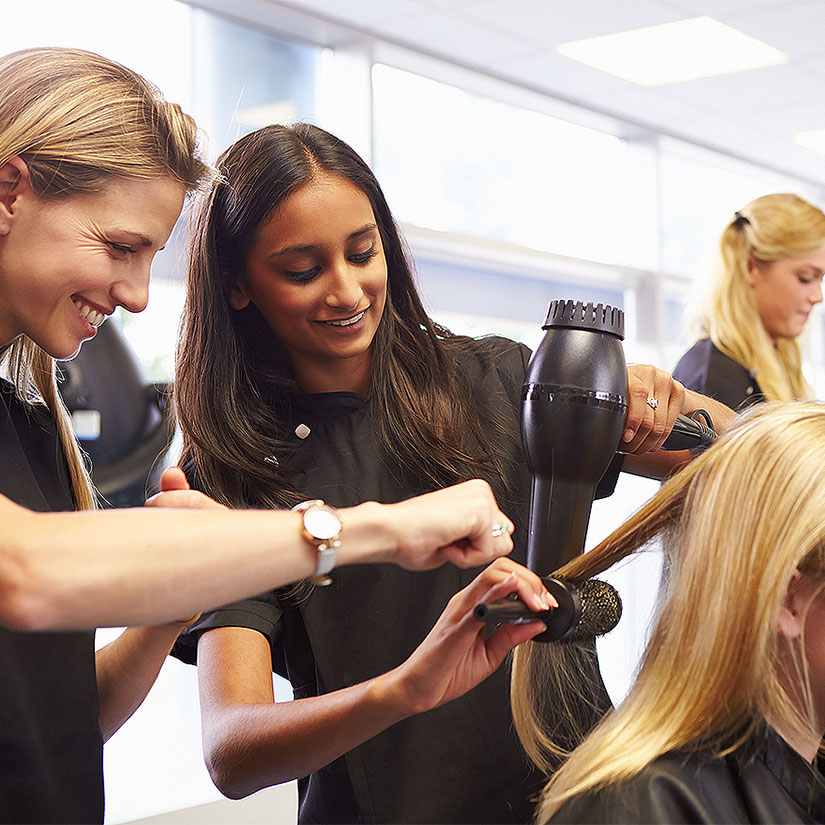What is an ombre hair color? One of the most commonly requested services at a salon for colorists is an ombre hair look. Ombre hair refers to a gradient hair color; at the top of the hair is one color, while at the bottom of the hair is another color. Most commonly, the top is darker, while the bottom is lighter. However, due to the difficulty inherent in creating a smooth gradient, this can also be a very difficult process. Achieving a flawless ombre requires expertise in hair coloring techniques, including bleaching, toning, and blending. The stylist must carefully consider the client’s natural hair color, desired outcome, and hair condition to determine the best approach. Here’s what you need to know if you’re hoping to create an ombre hair look.
How To Do the Ombre Hair Color Technique?
Creating a good ombre starts with good color placement. You want to make sure the ombre doesn’t look poorly placed. That means, first and foremost, you need to cut the hair before you color it. Cutting the hair first will ensure the ombre looks good on a fresh new cut rather than the old style.
It’s also important to ensure that the hair is fully saturated at the bottom. While you want a gradient near the middle, where the ombre will be prominent, you don’t want any large portions of dark hair on the very bottom of the gradient. Depending on how you apply lightener, you may also want to mix a bit of extra developer in to make it a little runnier to ensure hair is fully saturated.
Method One
The first method many people learn for ombre is the “teasing method.” The teasing method tends to avoid any sort of dramatic fade-in. Section the hair from temple to temple, then clip the top half of the hair up, and do the same with another section from mid-ear to mid-ear. Starting from the bottom section, tease the hair in one-inch vertical sections, starting slightly above where you’re hoping to start the fade. Add foil and lightener onto the hair, starting at the bottom and bringing it up about an inch and a half into the teased hair. Repeat this pattern for all hair. Then rinse the lightener out and wash the hair fully, combing out the teasing.
Method Two
The second method of ombre is the “hand painted method.” With this method, the colorist has significantly more control over exactly how the ombre will end up looking. Rather than making special partings, simply take sections of hair, then paint the lightener on, using very light brush strokes to encourage an ombre look. Once you’re done with the section of hair in question, wrap it in foil and allow it to sit. This is a more advanced technique that requires more knowledge of how hair feels and performs.
Method Three
The third method of ombre is the “blonde method.” This is a traditional ombre that is done on someone with blonde hair. For an ombre on dark hair, you have to lighten the ends; for an ombre on blonde hair, you have to darken the top. That means following the teasing method, but instead of applying the lightener from the bottom up, you’ll apply a color that’s a few shades darker than the client’s hair from the root down. Paint the color only about half an inch into the teased section of the hair to create the best gradient.
Conclusion
Creating an ombre hair look doesn’t have to be as hard as it looks. Although you’ll likely need a lot of practice to perfect your ombre or balayage styles, crafting ombre hair can be surprisingly easy. If you’re thinking about how you might implement these style options into your salon career, you might want to start looking into the cosmetology program from Tricoci University of Beauty Culture. With this cosmetology program, you’ll learn from experts the best ways to do everything from ombre to haircuts and wild hair colors and more.





